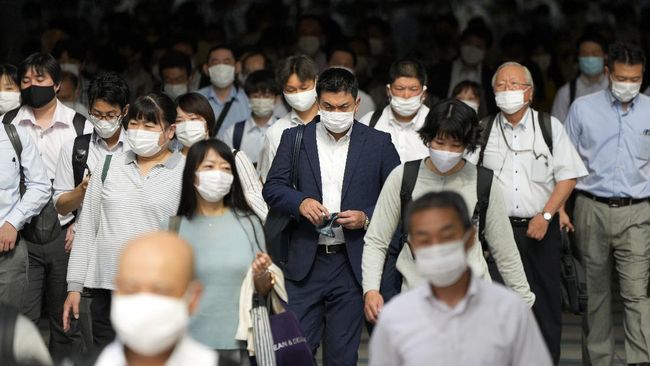Japan is experiencing a record surge in cases of streptococcal toxic shock syndrome (STSS), a severe and often fatal bacterial infection. As of June 2, 2024, the Health Ministry recorded 977 cases of STSS, surpassing the previous year’s record of 941 cases. This marks the highest number of cases since tracking began in 1999. The mortality rate for STSS can be as high as 30%, with 77 deaths reported between January and March this year.
Understanding Streptococcal Toxic Shock Syndrome (STSS)
STSS is a rare but serious condition caused primarily by group A streptococcus (GAS) bacteria. While GAS commonly results in mild infections like strep throat, it can occasionally become invasive, leading to life-threatening conditions such as STSS. The infection manifests initially with symptoms like fever, muscle pain, and vomiting. However, it can rapidly progress to more severe symptoms, including low blood pressure, swelling, and multi-organ failure as the body goes into shock. Despite medical intervention, the fatality rate remains high; the US Centers for Disease Control and Prevention (CDC) estimates that up to 30% of affected individuals may succumb to the infection.
Causes and Transmission
Group A streptococcus bacteria are the primary culprits behind STSS. These bacteria typically cause throat and skin infections but can become invasive under certain conditions. Invasive infections occur when bacteria penetrate deeper tissues or the bloodstream, producing toxins that facilitate their spread and exacerbate their harmful effects. This can lead to severe illnesses like STSS and necrotizing fasciitis, commonly known as “flesh-eating disease.”
Most STSS cases arise from GAS bacteria. People with compromised immune systems or underlying health conditions, such as cancer or diabetes, are more vulnerable to these severe infections. Invasive strep infections were somewhat mitigated during the Covid-19 pandemic due to widespread public health measures like masking and social distancing. However, the relaxation of these measures has seen a resurgence in such infections globally.
Current Situation in Japan
The recent spike in STSS cases in Japan has alarmed health authorities and medical professionals. The National Institute of Infectious Diseases (NIID) reported that 97 individuals died from STSS last year, the second-highest number of fatalities in six years. This year, the infection rate has continued to rise sharply, with 977 cases reported by early June, exceeding last year’s total.
The cause behind this unprecedented increase remains unclear. Japanese public broadcaster NHK has noted that experts are still investigating potential factors contributing to the surge. One theory is that people’s immune systems may have weakened due to reduced exposure to various bacteria during the Covid-19 pandemic. Professor Ken Kikuchi of Tokyo Women’s Medical University suggests that the lack of regular bacterial exposure during the pandemic might have made more people susceptible to infections like STSS.
Risk Factors and Prevention
STSS primarily affects older adults, individuals with open wounds, and those who have recently undergone surgery. However, the exact transmission mechanisms remain partially understood, as the CDC points out that the entry point for the bacteria in many STSS cases is unidentified. The infection can be particularly devastating because it progresses rapidly, requiring prompt medical attention to improve survival chances.
Preventive measures against STSS include maintaining good hygiene practices, promptly treating minor wounds to prevent bacterial entry, and monitoring for early symptoms of infection. For those at higher risk, such as the elderly or immunocompromised, extra precautions are necessary to minimize exposure to potential sources of GAS bacteria.
Broader Implications and Global Context
The rise in STSS cases in Japan is part of a broader trend observed globally. Following the relaxation of Covid-19 restrictions, several countries have reported increases in invasive group A streptococcus infections. In December 2022, the World Health Organization (WHO) received reports from five European countries indicating a rise in iGAS cases, particularly among children under 10. The CDC also noted an apparent increase in such infections in the United States around the same time.
Future Outlook and Health Recommendations
As Japan continues to grapple with the STSS outbreak, health authorities are emphasizing the importance of early detection and treatment. Public awareness campaigns are crucial to educate the population about the symptoms and risks associated with STSS. Medical professionals recommend seeking immediate medical attention if symptoms like persistent fever, muscle pain, or swelling occur, especially in individuals with known risk factors.
Efforts are also underway to better understand the underlying causes of the recent spike in cases. Ongoing research aims to identify specific factors contributing to the increased susceptibility to invasive GAS infections. This knowledge could inform future public health strategies to prevent and control such outbreaks.
Japan’s record increase in STSS cases underscores the need for vigilance and proactive healthcare measures. With the mortality rate of this severe bacterial infection remaining high, timely medical intervention and preventive strategies are vital. As researchers continue to investigate the reasons behind the surge, public health authorities must focus on raising awareness and promoting effective prevention practices to safeguard public health.

